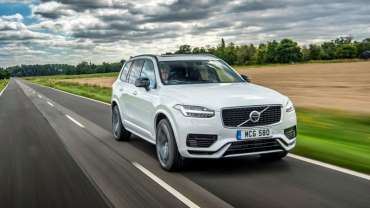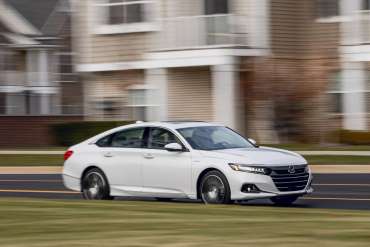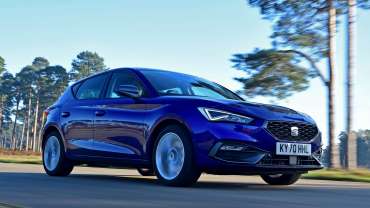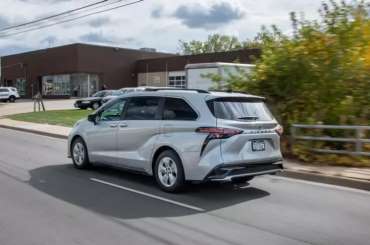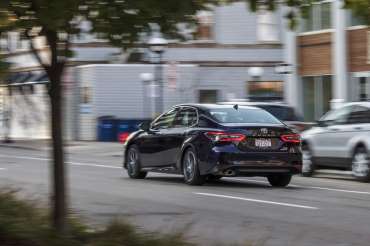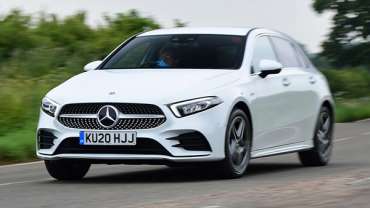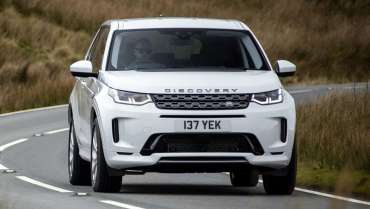Displaying items by tag: Hybrid
Volvo XC90 hybrid Recharge T8 (2020) review: posh power
► 400bhp, 100mpg, 0-62 in 5.8seconds
► Swedish seven seater
► Frugal and fast - but not at the same time
Back when Elon Musk was merely known for crashing his McLaren F1 and Jeff Bezos was a bookseller, Volvos were safe and sturdy cars made for ferrying around your offspring.
Fast forward to today and the brand has evolved into a stylish desirable car marque that no longer just trades off being the safest around.
Keep hitting the fast forward button and you'll see that a new Volvo XC90 is due in 2021. It'll be a hybrid and EV only affair.
With this in mind - is the XC90 worth buying still? Or should people wait for the new car?
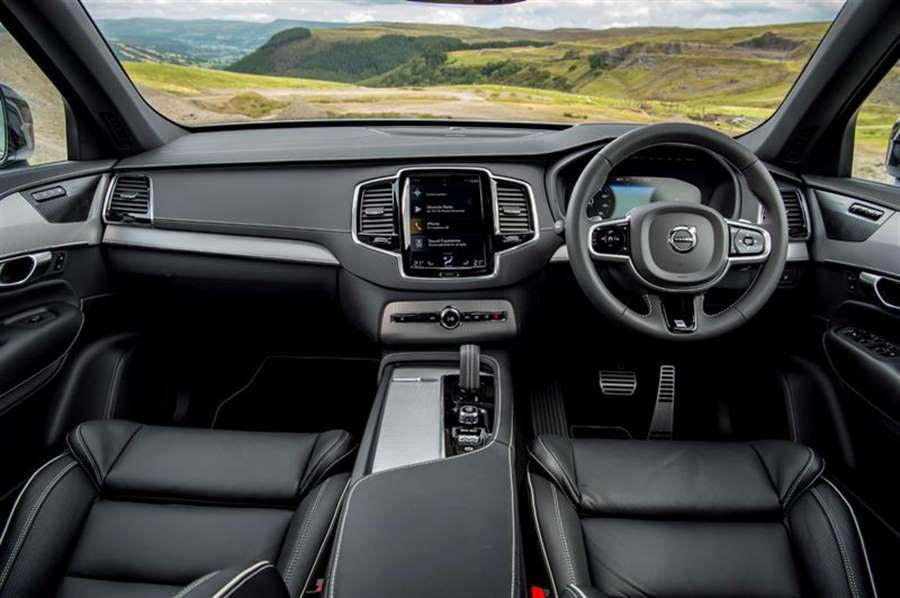
The best hybrid SUVs - on CAR
The XC90 T8 hybrid, or Recharge for short, is the most expensive, cleanest, frugalist, and quickest car of the XC90 range. Its raison d'etre is that it's a seven-seat plug-in hybrid - something of a rarity still.
It's aimed at the middle classes who can't quite commit to a fully-electric car, but still want the tax breaks and street cred associated with one.
While there's also a hint of the Q-car about it. Lovers of stealthy performance cars will be salivating at the thought of a 2.3-tonne family-hauler cracking the 0-62mph sprint in less than six seconds.
A 400bhp, £60k Volvo hybrid with a crystal gear selector
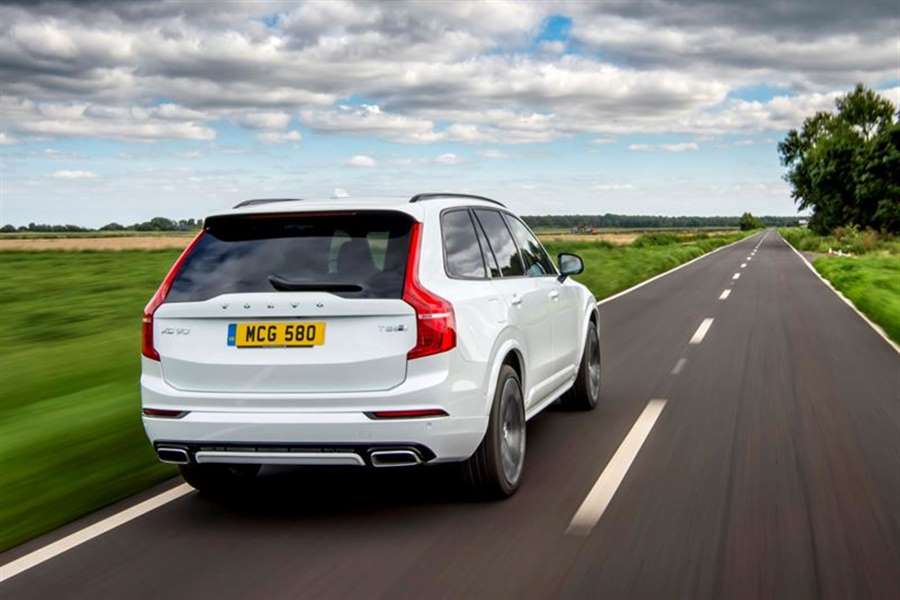
Expensive, fast, stylish and beautifully crafted, it’s a standard-bearer for the Swedish marque in its assault on the premium establishment, a move that’s being met with more success than Volvo dared hope.
The XC90 uses Volvo’s SPA scalable product architecture. It also underpins the S90 saloon and V90 estate, while the chassis was designed from the outset to package electric powertrains. In the T8 a petrol engine in the nose drives the front wheels via an eight-speed auto gearbox. A generator sandwiched between the two rapidly cranks the petrol engine into life, boosts torque and charges the battery as required.
The cells, housed in the central tunnel a propshaft normally calls home, feed a large single electric motor on the rear axle that also generates electricity under braking. A control unit in the engine bay synchronises the two power sources, ensuring happy, efficient collaboration and all-wheel drive when required.
Does the XC90 Recharge feel 400bhp fast?
Not quite – think effortless performance rather than unlikely dragster. Mash the throttle to the carpet in Power mode and the T8 launches pretty smartly, the battery pouring power into the electric motor as the turbocharged and supercharged direct-injection 2.0-litre four slogs its guts out. As a performance powertrain it’s undoubtedly effective, the claimed 5.8sec 0-62mph feeling entirely believable, but the car’s not inconsequential weight (2343kg) blunts performance.
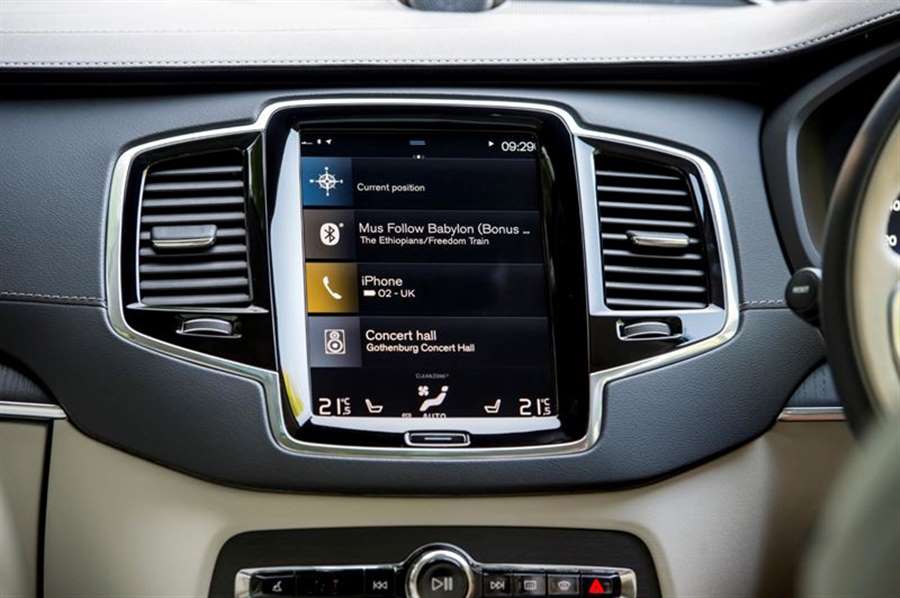
This kind of heavy-footed tomfoolery also feels pretty inappropriate, not because the chassis can’t cope – far from it – but because the petrol engine’s strains lack charm, shattering the XC90’s otherwise very endearing serenity. Volvo insists a more sonorous higher cylinder count would have been incompatible both with the firm’s product architecture and the wants of environmentally responsible consumers. Certainly the four-cylinder engine contributes much to the T8’s headline figures of 63-76g/km of CO2 and 83.1-100.9mpg on the combined cycle, though, after running one for six months, we can safely say the latter is an almost impossible figure.
The obscene three-figure MPG rating is synonymous with the plug-in hybrid car. We reckon if you charged religiously, and never drove more than 100 or so miles, the figure might be someway achievable. But the real hindrance to the XC90 is that when the battery is bereft of charge, you're realistically looking at a sub 30mpg car.
Volvo quotes an official electric range of 31 miles, but with day-to-day mixed driving expect more like 20.
Back to the drive modes. It's better to select the Hybrid and trade a little of Power’s throttle response and poke for improved economy and some far more agreeable peace and quiet. Either way the integration of electric and petrol power is almost seamless. At smaller throttle openings the petrol engine chiming in and out is almost undetectable, and the brake pedal is similarly well resolved, passing through the regenerative phase and into hydraulic braking with no discernible shift in resistance.
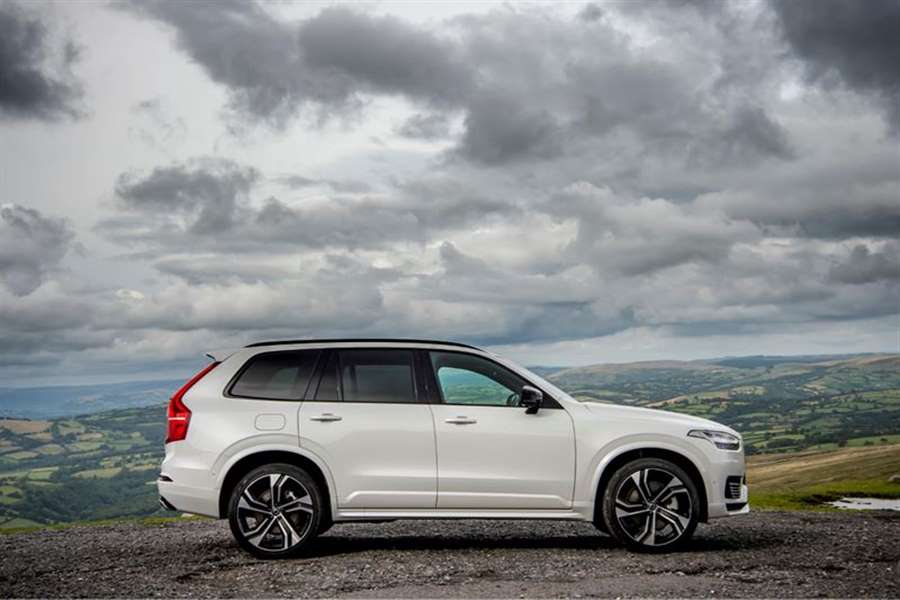
The usual PHEV functionality ensures a good degree of control: choose Pure mode to use only electric, select Braking on the gear selector for stronger regenerative braking on downhill runs, or even a lower gear for increased engine braking; use the instrument display or the dead-spot in the throttle pedal’s travel to stay on electric power, rather than accidentally triggering the petrol engine’s assistance.
High-rise limo or lively steer?
Air-suspended XC90s deliver an impressive drive, blending a cosseting ride with impressive body control. Appropriately there’s a little initial roll before the outer air struts take up the slack, lending the 5m-long seven-seater the wieldy feel of something much smaller and lighter.
Conventionally sprung XC90s manage a good impression of the same body control but lose a good deal of the ride quality, occasionally running out of answers on the kind of weather-beaten roads the UK does so well. So budget for the air suspension, which also drops the rear of the car by 50mm on demand for the easy loading of heavy furniture and arthritic dogs.
Back to that crystal gear selector
Curious timbers, machined aluminium and acres of beige leather don’t sound too promising but, almost irrespective of colour choice, the XC90’s is one of the finest interiors out there, certainly in anything like a comparable price bracket.
Fit and finish are exemplary, the design striking in a very pleasing, understated way and the overall sense of light, space and uncluttered calm the perfect ally to the T8’s potential for 31 miles of near-silent pure electric transportation. Additional NVH work has banished much of the background chatter of fans and compressors a combustion engine’s machinations normally mask, leaving an impressive and luxurious absence of noise.
Although the heating/cooling functions are controlled via the car's touchscreen. Which is annoying and fiddly on the move. Turning the heated seats on to their full power requires three stabs at the screen, for instance. And we can't help but the crystal gear selector is a bit...much.
Verdict
The XC90 is fundamentally a very fine SUV, and the hybrid powertrain has much to recommend it, not least the tax breaks afforded by its miserly CO2 output. While obviously 400bhp means it shifts like a V8.
However, for most people a diesel-engined XC90 delivers comparable if not superior economy, particularly if the battery’s never charged from the grid (50% of its existing PHEV owners don’t, according to Volvo) but the T8’s potential for both lunging bouts of acceleration and silent electric running is hugely attractive. Much like the car itself.
Since being launched, other manufacturers have caught up by offering plug-in hybrid SUVs. Audi, Range Rover, and BMW all have these in their arsenal - and all are newer too. Yet, the XC90 still delivers in being devastatingly fast and handsome, and nowhere near as audacious and flashy as them.
Source: carmagazine.co.uk
Tested: 2021 Honda Accord Hybrid Polishes a Winning Formula
A range of subtle updates for the 2021 model year improve the Accord's tech quotient without altering its excellence.
The Honda Accord offers an unusually broad breadth of appeal. Among the family sedan's many trims and powertrains, there's truly something for everyone—and each version is mighty compelling in its own way. There are affordable models for those on a budget, Sport models with handsome curb appeal, the upscale Touring trim offering near-luxury interior appointments, and the Hybrid providing fuel efficiency without sacrificing refinement. Honda has revised the lineup for 2021, but there's little need for hand-wringing here. Besides the elimination of the six-speed manual transmission, there isn't anything in the refresh to diminish the Accord's overall excellence. And it improves in a few meaningful ways.
Nip and Tuck
If Honda's freshening of the Accord for 2021 seems especially light, that's because it is. Tweaks at the front include a slightly wider grille and updated lighting elements, which include all-LED arrays on EX trims and above. Inside, the previously optional 8.0-inch infotainment touchscreen is now standard, and Honda has added rear-seat USB ports, a wireless smartphone charging pad, and wireless connectivity for Apple CarPlay and Android Auto as options.
HIGHS: Smooth and efficient powertrain, upscale trims deliver a near-luxury look and feel, generous standard features.
Safety and driver-assistance features are improved for 2021 as well. Honda recalibrated the Accord's lane-keeping assist and adaptive cruise control systems to behave more naturally. After a brief drive on the highway in heavy traffic, we can confirm that the adaptive cruise control no longer exhibits the rubber-band behavior of the 2020 model, instead allowing the Accord to slow more gradually as it approaches traffic and quickly get back up to speed once the left-lane dawdlers move over.
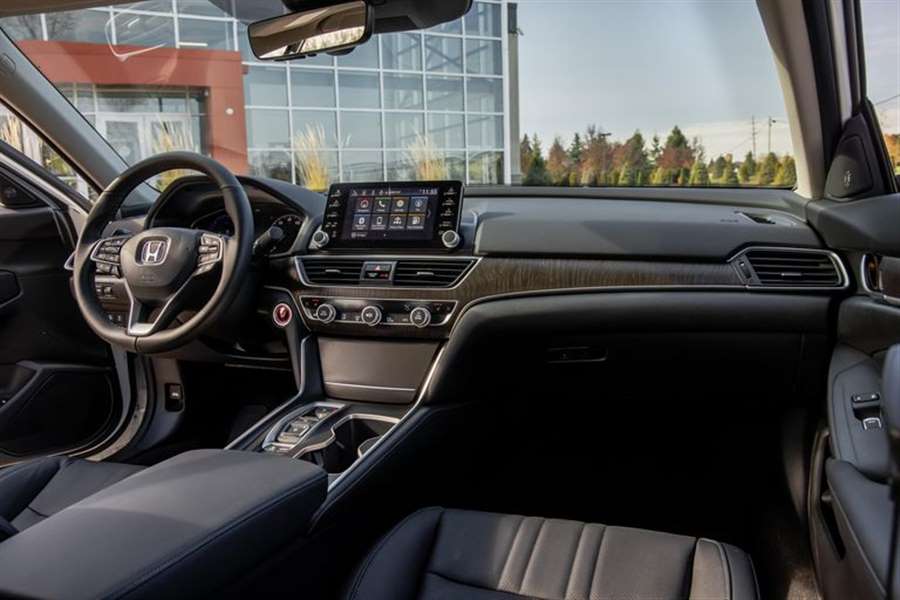
Our $38,050 Touring Hybrid test vehicle came loaded with features, including a head-up display, heated and ventilated front seats, leather upholstery and attractive 19-inch wheels. It also featured a new low-speed automated emergency-braking system that will apply the brakes if the driver is about to bump into an object at speeds between 1 and 5 mph. The only option was the sparkly Platinum White Pearl paint job, which cost $395.
Under the Hood
The Accord's crisp handling, balanced ride, and quiet cruising demeanor all carry over unchanged. The suspension tuning strikes a nice balance, with the Accord delivering confident handling while managing to expertly edit out road imperfections.
LOWS: Styling updates are a little too subtle, clamorous engine sound under heavy throttle, EV mode only goes for about one mile.
Honda made some slight adjustments to the hybrid system's power delivery for 2021, with the intention of providing stronger acceleration in Sport mode. The alterations are predictably subtle. At our test track, the 2021 model pulled off a 7.1-second zero-to-60-mph time, which is similar to the last version we tested in 2018. What's more noticeable are the changes to the power delivery in the normal driving mode, which exhibits a calmer demeanor under acceleration.
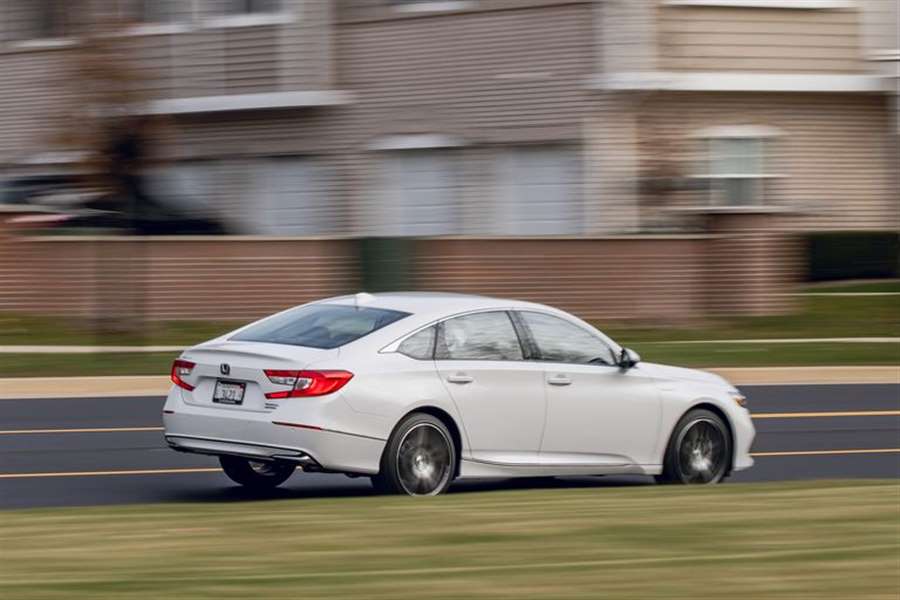
The Honda's hybrid powertrain is unlike any other in the market. The 143-hp 2.0-liter inline-four can generate electricity or directly drive the wheels in low load situations (think highway). In most situations, the 181-hp electric motor provides the propulsion. When you crack the whip, both the engine and motor combine for 212 horsepower, but off the line the Accord feels like a torquey EV because that's what it is; the electric motor makes 232 lb-ft of torque at 0 rpm.
As in the pre-facelift models, the 2021 Accord Hybrid still exhibits some coarse grumbles from the engine under heavy throttle. Fortunately, fuel economy remains practically the same, with the 2021 model's EPA combined estimate remaining 48 mpg and the highway score moving up a tick from 47 to 48 mpg. But that's for the lower-spec models riding on 17-inch wheels. The Touring trim rides on 19s and carries a 43-mpg combined and a 41-mph highway rating.
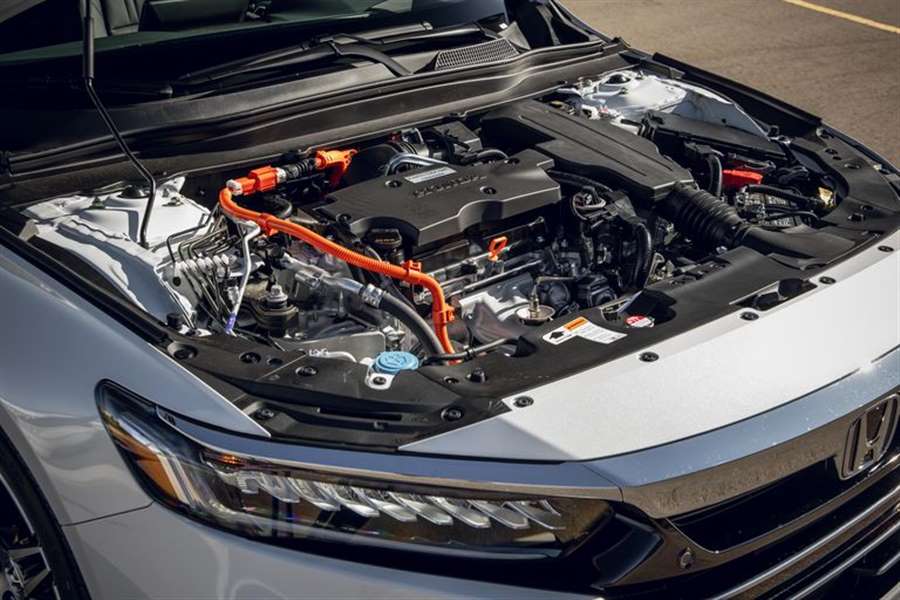
These updates, as minimal as they are, provide meaningful enhancements to the Accord's appeal without deviating from its winning formula. The alterations to the hybrid powertrain may not result in measurable improvements at the test track, but they help deliver a subjectively better driving experience. And the fact that Honda resisted the urge to jack up the price means that the Accord Hybrid Touring remains an outstanding anomaly—a luxurious sedan that gets economy-car mileage, no sacrifices required.
Source: caranddriver.com
New SEAT Leon e-Hybrid 2020 review
The new SEAT Leon e-Hybrid brings plug-in power to the hatchback's range for the first time
Verdict
With price on its side, the SEAT Leon instantly becomes one of our favourite plug-in hybrid family cars. The rock-bottom tax costs make it one of the more appealing PHEVs for company car drivers, while private buyers will revel in this car’s usable electric range. Its powertrain is perhaps not quite as slick as the one you find in the Mercedes A 250 e, but the SEAT remains decent to drive and easy to live with. Also available as an ST estate, this new Leon e-Hybrid could well be the consummate all-rounder.
While the new SEAT Leon was the last of the VW Group’s MQB mainstays to launch in the UK, it’s actually the first to be fitted with a plug-in hybrid powertrain.
Of course the Audi A3 40 TFSIe, Volkswagen Golf GTE and Skoda Octavia iV are all just around the corner, but it’s the SEAT we get to sample ahead of the rest. Fitted with a 1.4-litre TSI petrol engine and a 13.1kWh battery, the Leon produces a warm hatch-rivalling 201bhp and 350Nm of torque – plus a zero-emission range of up to 40 miles.
It’s available in all but the Leon’s entry-level SE and SE Dynamic trims – and with prices starting from a smidge under £31,000, it’s one of the most affordable plug-in hybrids on the market; the Kia Niro and Hyundai Ioniq undercut it, but only by a couple of hundred pounds.
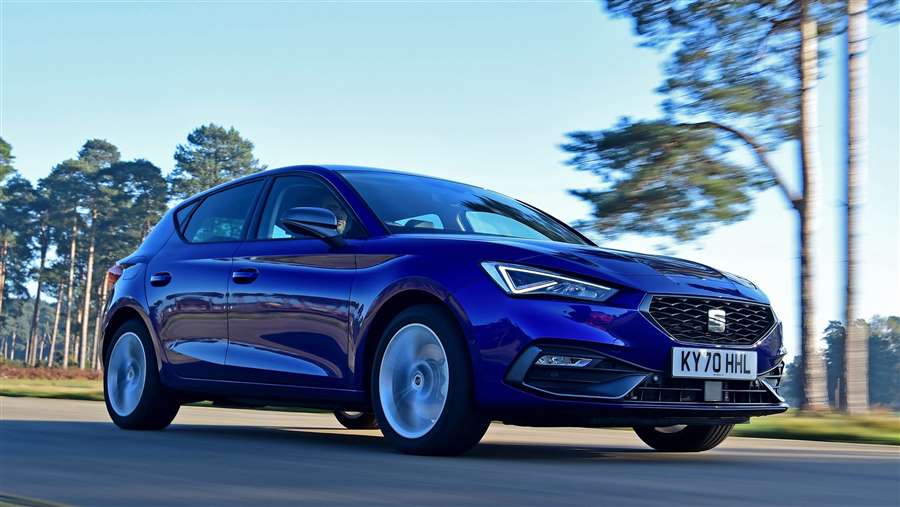
The Leon e-Hybrid’s tax advantages are clear. Company car drivers not swayed by the FR Sport, First Edition or Xcellence Lux’s larger 18-inch wheels will bag themselves a car with that quoted 40-mile (WLTP) electric range – resulting in class-leading (six per cent) Benefit in Kind costs.
Still, at this end of the market the real-world cost implications are minor: a higher-rate tax payer looking at the FR and FR Sport models will pay BiK of £1,237 or £1,299 per year respectively. Whichever you go for, you’ll save a decent chunk over the equivalent 1.5 TSI 150PS petrol car, which in like-for-like FR spec will set you back more than £3k a year.
But of course, the usual caveats apply. You’ll need to plug in your Leon e-Hybrid regularly to benefit from this car’s true low running costs. Topping up the battery will take just under four hours via a 3kW home wallbox, or around six hours using a three-pin plug. The resulting range, in our experience, is closer to 30 miles than the published 40 in normal driving.
But that’s still more than you’ll get from either the Hyundai or Kia, and on par with the flashier Mercedes A 250 e – a model many company car drivers will be looking very closely at thanks to its premium interior and upmarket badge. Of course, the SEAT isn’t as posh or plush as its German rival, but you might be surprised at the list of toys – even on basic FR cars.
Our test model was fitted with absolutely no options, yet still came equipped with 17-inch wheels, LED lights, three-zone climate control, a fully-digital cockpit display and a 10-inch infotainment system with ‘Connected’ navigation.
Step up to FR Sport and you’ll add larger 18-inch wheels, plus heated front seats and a heated steering wheel. Xcellence brings dynamic indicators, four USB-C ports and a rear-view camera, while flagship Xcellence Lux gets leather, an electric tailgate and SEAT’s Safety and Driving Pack with adaptive cruise.
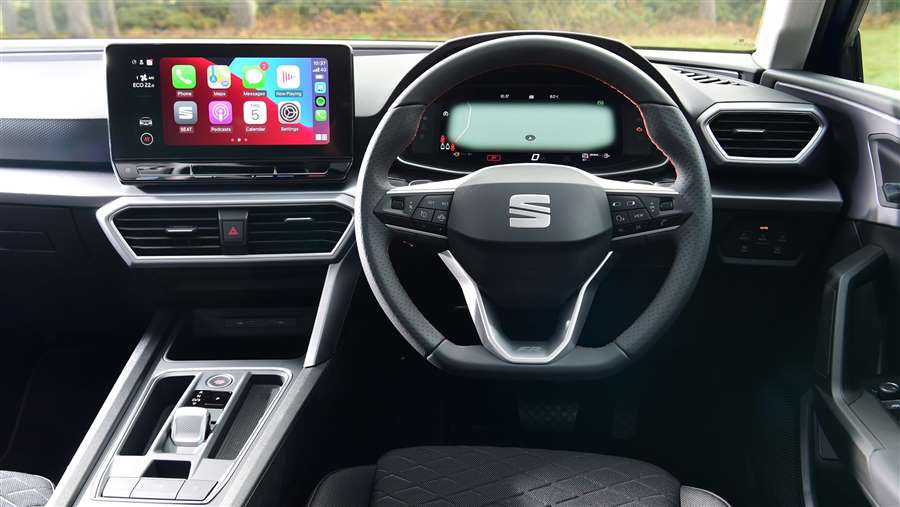
Visually, there’s very little to separate this e-Hybrid variant from the rest of the range. In fact, from the outside, the only tell-tale signs this is the plug-in model come courtesy of the charge flap on the front wing and small badge on the bootlid. Otherwise, it’s business as usual.
It’s the same story inside, which is to say it’s filled with crisp, digital screens, but otherwise a little dark and dull. Our FR car’s red stitching does little to lift the mood; the Leon offers a functional layout that perhaps lacks the flair of some rivals.
Our first drive of the latest Leon featured the mid-range 1.5-litre TSI petrol engine with 128bhp and a six-speed manual gearbox. Pleasingly, much of what we liked about that car has transferred to this PHEV model; good body control, responsive steering, and a punchy powertrain.
Performance is really very good. Use both power sources and the Leon e-Hybrid builds speed at a frankly alarming rate – 0-62mph takes just 7.5 seconds. The engine can drone under load and at higher revs, but settles at a cruise. In fact, on the motorway you’d be hard-pressed to know whether the petrol motor was firing at all.
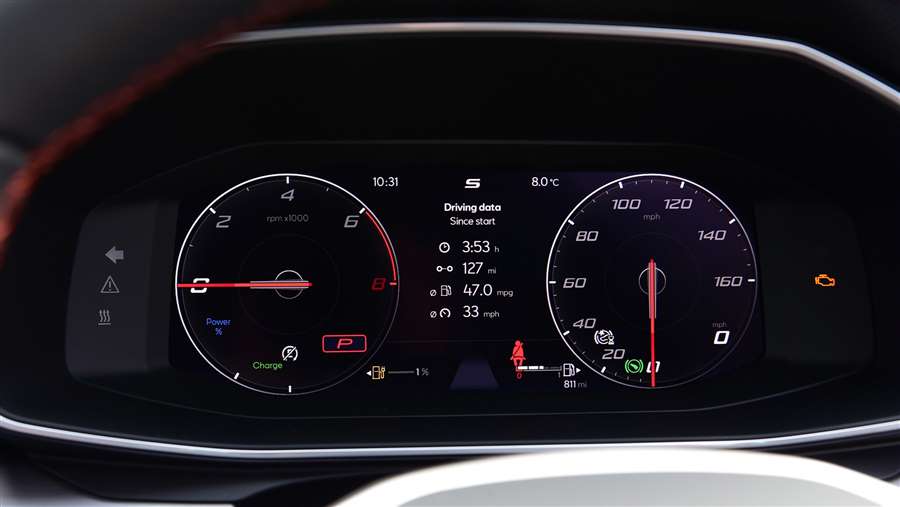
The ride is still quite firm, but unlikely to be a dealbreaker. It’s stiff, but the up-side is a level of control missing in many family hatchbacks. The car feels safe and secure at higher speeds – and only really rough or undulating roads upset its composure.
What may be less pleasing to potential buyers is the integration of that battery and the associated electric motor. In e-Mode (the car’s default setting) the Leon is quiet and refined, but the A-Class is better at switching between petrol and electric when running in its hybrid setting. Furthermore, the Mercedes is keener to cut the engine and return to EV power when there’s sufficient charge left in the battery.
That said, the Leon is surprisingly efficient when its cells are depleted; over 120 miles of urban, motorway and rural roads we managed an indicated 48mpg – similar to what we’d expect from the conventional 1.5 TSI. It’d be possible to double that if you charged at home overnight and started with a full battery, of course.
But the Leon e-Hybrid’s Achilles heel is practicality. SEAT’s evergreen family car has always sat middle of the pack when it comes to boot space and cabin room, and the new model is no different. Space in the back of the hybrid is unchanged, and the three-zone climate control will be a welcome addition for rear-seat passengers.
Yet boot space takes a big hit. The standard car’s 380-litre boot is marginally bigger that you’ll find in a Ford Focus, and it matches the latest Volkswagen Golf – but this hybrid sacrifices a whopping 110 litres to make space for the clever battery tech.
While that may not be a big deal on its own, you also miss out on any kind of under-floor storage, meaning you’ll need to keep the (standard) Mode 3 cable and (optional) three-pin plug alongside your luggage. At least you get a bag to keep things tidy.
Regardless, it’s a minor moan when you consider SEAT offers the same PHEV package in the more versatile ST estate bodystyle – all for just £1,030 more.
Source: autoexpress.co.uk
2021 Toyota Sienna Review: A Strange Brew
The verdict: The redesigned 2021 Sienna is Toyota’s gambit to avoid a cookie-cutter minivan at all costs. It’s refreshing in some ways, but other aspects will make you wish the automaker had stuck to a more conventional approach.
Versus the competition: As you might expect for any redesigned minivan, the new Sienna has more family-friendly features than you can shake a pogo stick at. Less characteristic of the class, it boasts a risk-taking interior and a hybrid-only powertrain — qualities that could turn away as many shoppers as they attract.
With styling inspired by Japan’s bullet trains, the Sienna courts minor controversy by way of a gaping lower grille, but Toyota’s been pushing a big grille since it refreshed the minivan late in the prior generation. On sale in November, the 2021 Sienna model comes in five trim levels: LE, XLE, XSE, Limited and Platinum, all with a four-cylinder hybrid powertrain and front- or all-wheel drive. We evaluated two preproduction AWD examples: an LE and XSE.
Hybrid Only
Toyota’s decision to offer the Sienna as a gas-electric hybrid comes as little surprise given the automaker announced plans in 2017 to offer electrified variants across its entire lineup by roughly 2025. More curious is the decision to offer the Sienna only as a hybrid, in this case with a 2.5-liter four-cylinder plus an electric drive motor. Total output is 245 horsepower, with another electric motor at the rear axle facilitating AWD if equipped. Toyota claims the same 3,500-pound towing capacity as before, plus EPA-estimated combined mileage of 36 mpg (FWD) or 35 mpg (AWD). The agency has yet to publish figures, but it’s safe to say the 2021 Sienna’s fuel efficiency will smoke that of the outgoing Sienna, which in its final years offered only a non-hybrid V-6.
What’s also clear: The new Sienna loses a step to the outgoing model, which made 296 hp, though the deficit isn’t as bad as it looks on paper. Step on the gas, and the hybrid drivetrain’s electric motors lend immediate oomph from a stop, but engine power then raises revs noisily and a little out of sync with your right foot. Power comes soon enough, but maximum acceleration is a bit slower than the old Sienna. The new drivetrain seems optimized for power transitions when you’re already in motion; go from some pedal to more pedal, and power comes with little delay.
Ride and Handling: Base Is Best
Ride quality depends largely on what you get. Equipped with 17-inch wheels with P235/65R17 tires, the Sienna LE absorbs bumps with clean, high-quality composure, though some roads can produce slight, lateral body movement. The XSE AWD pairs a sport-tuned suspension with 18-inch wheels and P235/60R18 tires, meanwhile, and the result is firm. Shock absorption feels altogether less sophisticated, with harsh impacts and more jittery body movement. Front-drive XSEs have 20-inch wheels with even lower-profile tires (P235/50R20s) that may be even more harsh.
Little payoff comes on the handling front, as the LE’s dynamics seem just as good as the XSE’s without the undue firmness. With the battery pack behind the front axle, under the front seats, the Sienna maintains steadfast balance hustling around sweeping corners. It steers with light effort and direct response, though feedback is numb enough to allow excessive wandering on center — especially in the LE, which lacks the XSE’s sport-tuned steering. The XSE’s sport suspension allows slightly less body roll, but the regular setup still corners reasonably flat for what this is. And the tires on both minivans (Bridgestone Turanzas on the XSE and Falken Ziex on the LE, both all-seasons) exhibit good lateral grip.
Unconventional Interior
Draped with hulking shelves and a wide bridge-style center console, this Sienna sports the most left-field interior for a Toyota minivan in the U.S. since the Previa. Gone is the old Sienna’s drop-down center console and floor-level space to throw a medium-size purse, a layout still offered in the rival Honda Odyssey and certain variants of Chrysler’s Voyager and Pacifica siblings. In its place is a massive flow-through console that bridges the dashboard and center armrest. Underneath it is a large storage area with … enough space to throw a medium-size purse. It’s a wide setup overall, but so is the driver’s berth; even for long-legged adults, the console shouldn’t clip your knees. If it does, Toyota pads the outboard section to minimize discomfort.
Cabin quality in our preproduction test cars was all over the map, with harsh, cheap-looking finishes over much of the dashboard and insufficient padding in areas like the upper doors. The LE has a decent grade of cloth upholstery, but the XLE and XSE have SofTex vinyl, which (at least in our XSE example) imparts a rubbery industrial feel; Limited and Platinum models get leather. Toyota routed hardware for the mechanical gear selector down the front side of the console bin — a nice bit of packaging enabling the bridge-style console that usually requires the electronic selectors we universally dislike — but the selector’s rickety operation feels like it’s falling apart. Some of that might improve by production time, but this isn’t the first Toyota we’ve driven to have a shaky gear selector.
Among the console compartments, dashboard shelves and umpteen door pockets, the Sienna still has plentiful storage space. It also boasts decent forward visibility thanks to door-mounted mirrors and thin A-pillars. Rear visibility is less ideal, with bulky second-row head restraints blocking over-the-shoulder sightlines and a backup camera in dire need of better resolution. Higher trim levels offer a camera-based rearview mirror and 360-degree camera system, which we did not evaluate.
A 4.2-inch gauge display and 9-inch touchscreen, the latter with Apple CarPlay and Android Auto, are standard. Although wireless smartphone charging is optional, both smartphone integrations still require physical cords, not the wireless connectivity gaining traction industrywide. Spaced across all three rows are seven standard USB ports, including three of the newer USB-C variety. Options include a 7-inch gauge display, two household-style AC outlets, an 11.6-inch rear entertainment system and head-up display.
Winsome Seating …
LE and XLE models seat eight courtesy of a three-position bench with a removable middle seat in the second row. Optional on the XLE and standard on higher trims are second-row captain’s chairs, which reduce capacity to seven. In any case, space is plentiful all around, though accessing the third row from either side remains a cumbersome, multistep process. Fortunately, the second-row seats have exceptional sliding range — about a foot (in a seated position, farther for access) in base models or roughly double that with an optional extended-slide feature — to find a position that lends adult-friendly legroom in both rows.
Typical of a minivan, the Sienna’s third row folds backward into a floor cavity. Stow it there, and the available extended-slide captain’s chairs go nearly as far back as the third row once sat, with enough legroom ahead to host a soccer match. Like the outgoing Sienna, the 2021 model offers pop-up leg rests for passengers to lounge while the van is stopped, but these seats slide 10 inches farther than before, Toyota officials told us.
… Lose Some Cargo
Alas, the versatile seating arrangement comes at significant expense to cargo space. Regardless of configuration, the second-row seats neither fold down nor come out, provisions the Odyssey and Pacifica offer. Toyota says that’s because of new airbags mounted in the second-row seats. Curtain airbags are also standard, and the second row in plenty of cars — including the outgoing Sienna — fared well in side impact crash tests with curtains alone. For the 2021 Sienna, Toyota says the extended-slide seats necessitated the extra pair of airbags.
“Adding airbags to the seats allowed us to include the super-long slide,” said Nicky Hamila, a spokesperson for the automaker. “That would only be possible with airbags in the seats that travel with the seat and [protect] the occupant in every position.”
Still, the explanation doesn’t justify why chairs without the extended-slide feature still have the extra airbags and no removability. In any case, maximizing cargo room requires locking the second-row chairs into a collapsed forward position, similar to a provision in the old Sienna. But for maximum room, the old chairs were fully removable. These are not, and the seatbacks lean forward but don’t fold horizontal to maximize usable cargo depth. Toyota says the new Sienna can still fit 4-by-8-foot sheets of plywood at an angle from floor to seatback, but the setup nonetheless reduces roughly 8 feet of potential cargo depth at floor level down to about 6 feet with the seats collapsed forward, by our measuring tape. In other words, if you need to transport bulky furniture, the non-removable seats reduce maximum cargo room by about a quarter.
Behind the second row, cargo specs are relatively more competitive. With the XSE’s third row folded into the floor and its extended-slide second row at the midpoint of its sliding range — a realistic comparison with other three-row vehicles, which universally have much less sliding range — we measured 44.6 cubic feet of cargo room behind it. (We also measured the space with the chairs positioned all the way back, and the volume behind them was 32.6 cubic feet.) The first figure is competitive: We logged 41.6 cubic feet behind the second row in a 2021 Honda Odyssey, for example. It also underlines the sheer packaging efficiency of minivans at large. We measured 41.8 cubic feet behind the second row of a 2021 Chevrolet Suburban, a full-size SUV that’s nearly 2 feet longer.
Behind the third row, we measured 21.7 cubic feet of volume in the Sienna. That’s competitive with our measurements for the Odyssey (21.1 cubic feet) and, for that matter, the Suburban (23.0 cubic feet). Of note, our Sienna XLE lacked an optional spare tire; getting one would eliminate a wall cubby in back, subtracting about 1 cubic foot from our measurement.
Safety
Third-party crash tests have yet to be published for the 2021 Sienna as of this writing. Besides the aforementioned airbags — which make for 10 in total — the Sienna has an impressive roster of crash-avoidance technology, including full-spectrum automatic emergency braking with pedestrian detection, lane departure alert with steering assist and a blind spot warning system. On the driver-assist front, hands-on lane-centering steering and adaptive cruise control work all the way down to a stop; both are also standard. For parents with smaller children, a rear-seat reminder employs door sequencing logic, while the second and third rows have two or three sets of Latch anchors apiece, depending on trim.
Features and Pricing
The Sienna’s base price jumps some $3,000, but that’s because the outgoing model offered a budget-priced L grade that’s now discontinued. The LE starts just north of $35,500 with destination — a little steep for the class — but comes well equipped. Standard features include dual power sliding doors, tri-zone automatic climate control, one-touch power windows all around, a power driver’s seat, cloth upholstery, second-row sunshades and the full-fledged multimedia system.
At the other end, a loaded Sienna Platinum AWD tops out in the mid-$50,000s. That’s a few thousand more than the outgoing Sienna, though it’s a competitive — if eye-watering — price for an AWD minivan. Additional features en route to that price include vinyl or leather upholstery, a hands-free power liftgate, the rear entertainment system, JBL premium audio, heated and ventilated seats with dual power adjustments (though no height adjustment for the passenger), and heated second-row seats. Options uncommon to the class include quad-zone climate control and a power-adjustable steering column. On the flip side, there are no immediate plans to offer a panoramic moonroof or camera system to monitor passengers, two features offered by some rivals.
Toyota also plans to offer an onboard vacuum cleaner and refrigerator at some point. Officials said both features won’t be available at launch but are coming later on; however, they declined to provide a timeframe beyond that.
Should You Buy One?
Minivans have long thrown a smorgasbord of features at family shoppers, and the 2021 Sienna serves up as much as the rest of them. But its qualities feel a little more niche than before. If anything, the fourth-gen Sienna seems ready for a contingent of fastidious fans, even if other audiences shrug it off as something not mainstream enough. Minivan shoppers should add it to the list, at minimum because that list is so short. Whether you buy one will depend on whether you find Toyota’s new direction welcome or just plain odd.
Cars.com’s Editorial department is your source for automotive news and reviews. In line with Cars.com’s long-standing ethics policy, editors and reviewers don’t accept gifts or free trips from automakers. The Editorial department is independent of Cars.com’s advertising, sales and sponsored content departments.
Source: cars.com
2021 Toyota Camry XLE Hybrid Fixes Some Minor Flaws
While it still won't raise your blood pressure, the new Camry has a fresh face, an updated infotainment system, and a lower price.
Unlike the rest of the Toyota Camry lineup, which purports to be infused with sportiness, the 2021 Toyota Camry XLE hybrid is a sedan after more traditional Camry traits such as a supple ride, impressive fuel economy, and a handsome interior. The updates to the hybrid are focused on areas that either needed attention or, in the case of last year's front-end design, less attention.
That new front fascia swaps out the old snowplow-like lower grille with a less-in-your-face design. The look is sleeker and more mature and attractive than before. Inside, the Camry swaps out hard plastic for the soft-touch kind on the door panels. There's a choice of two new more touch-responsive screens. Measuring 7.0 or 9.0 inches, each offers volume and tuning knobs flanking either side of the screen, like an old radio. Upgrading to the larger touchscreen with navigation, Apple Car Play, Android Auto, and the nine-speaker JBL audio system is definitely recommended, even with the $1,760 price. Despite switching to a new layout, a larger screen, and a better organized menu structure, much of the old infotainment system lingers behind with outdated graphics and clunky software that isn't as intuitive and easy to use as competitors. The Camry faithful may notice that the XLE has a slick new herringbone pattern on the leather seats.
Powering the most fuel-frugal Camry is the same Atkinson-cycle 2.5-liter inline-four and electric motor combination as before. The two power systems put out a combined 208 horsepower to the front wheels. While acceleration around town is adequate, it's not the same story at higher speeds. When pressed into duty in a passing maneuver or sustained acceleration, the powertrain emits an unpleasantly gritty engine note during passing maneuvers. Toyota's 2.5-liter four is a bit loud, a trait made more apparent by the continuously variable automatic transmission's propensity to keep the engine at one rpm.
The powertrain does transition smoothly from electric to gas and electric, and the ride is soft and quiet. EPA ratings remain where they were last year: 46 mpg combined, 44 mpg city, and 47 mpg highway. Buyers who might have skipped the hybrid last year because of its lack of sportiness might be interested in the first-ever Camry XSE hybrid, which promises to combine the sporting looks of the XSE with the fuel economy of the hybrid.
Our fully loaded Camry hybrid XLE exists at the top of the Camry food chain with a price of $33,165. Surprisingly, that price is $560 less than it was for 2020. Compare base prices, and the hybrid Camry is a big $3000 or so less than the Honda Accord hybrid and the Hyundai Sonata hybrid. Even with every available option, the Camry is only about $1,500 more than the base Accord and Sonata hybrids. The Camry hybrid is apparently about more than saving gas, it's about saving money and saving face.
Source: caranddriver.com
2021 Mercedes-Benz A 250 e AMG Line Premium Review
The numbers alone make the A 250 e hugely appealing as a company car, while the fuel savings and fantastic interior will be just as tempting for private buyers. We hope that the quality issues our test car suffered were an isolated thing, but we would prefer a slightly more forgiving ride. Even so, this PHEV remains one of the highlights of the A-Class range.
We’ve been used to exaggerated fuel economy figures for years, and things don’t seem to have improved with the ranges manufacturers claim for electric cars either. So surely Mercedes’ declaration that its new plug-in hybrid A-Class could average over 250mpg and run on electric power for 44 miles is pie in the sky? Let’s see…
Most plug-in hybrids will struggle to get near the 30-mile mark their makers claim, so 44 miles is quite a challenge. But Merc’s answer is to give its baby a 15.6kWh battery – hidden where you won’t notice (until you fill up the smaller-than-usual 35-litre fuel tank) – and a turbocharged 1.3-litre four-cylinder petrol engine. Total power output is 215bhp, meaning the A 250 e’s 0-62mph time is a swift 6.6 seconds.
But what about those fuel economy figures? Of course, it all depends how you drive, but for our test of the car, we took a varied route over a mix of motorway, fast A-roads and urban stuff – further than the average driver will cover in a day.
We started with a full charge, although the range display only read 34 miles, possibly down to how the Merc had been driven before we got our hands on it. Of the first 30 miles we drove, the read-out showed that 28 of them had been covered on electric power, with the average fuel economy displayed on the read-out at its maximum of 99.9mpg and electric usage at 4.1m/kWh – both pretty impressive.
The range read-out showed 12 miles still to go, too, meaning a theoretical range just two miles shy of the 44-mile claim.
To be honest, if it hadn’t been for us being a bit forceful with the throttle to get the petrol engine to kick in, we suspect a whole 30-mile journey could be covered on electric power – and that means those huge economy claims are almost in reach for a great many people, as long as they plug their car in to charge regularly.
Plus, if your home energy costs no more than 13p per kWh, your first 40 miles will cost you a couple of pounds – less than half what you’d pay in a petrol-powered A-Class.
Then there are the company car tax savings, which will appeal to many. With its 32g/km figure and 44-mile range, you’ll only pay tax on 8 per cent of the P11D value (or just 6 per cent for the basic AMG Line version) versus a whopping 29 per cent for a petrol A-Class. Sure, your company will have to pay at least £32,925 for the cheapest A 250 e, but it could slash your company car tax liability by around a third.
The driving experience is a mixed bag, though. On electric power alone, the car is swift and quiet, as you’d expect. And when the engine kicks in, it doesn’t get that much rowdier unless you’re using plenty of revs, when things can get unpleasantly loud.
However, the throttle is super-sensitive and the lumpy eight-speed dual-clutch gearbox can make you think that the engine is cutting in even when it’s not. In electric mode, the power goes through the eight-speed DCT automatic gearbox, which is jerky going from first to second and feels as though the engine has fired up. You get the same kind of slight tremor you get when an engine cuts in, but it’s actually the gearbox just switching gears.
Really, the engine is only there for when battery power has run out. In most everyday driving situations, electric power will do just fine – even on the motorway at the legal limit. But if you want to match the exciting 0-62mph time, you’ll need to have both power sources working in tandem.
All four versions of the A 250 e come in sporty AMG Line trim levels, but they fail to match the fun of the full-bore AMG models. These aren’t the best A-Classes through bends by a long chalk, but they do an okay job as family transport.
Space is good in the front and back, the doors open wide to reveal decent access, all-round visibility is great, and the 345-litre boot will certainly be big enough for most buyers’ needs.
The A-Class is an easy drive, but not very rewarding: the steering responds okay, but has little feedback from the road, and while the tyres grip okay, they’re noisy – which is amplified by the quiet EV powertrain.
We were more disappointed with the ride, especially as our car had Comfort suspension. It’s not too uncomfortable, but other small hatches ride better.
More of a problem in the test car that we drove was the shiver that ran through the body and the subsequent rattles every time we went over cats’ eyes or hit a mild pothole in the road. It’s certainly not what you’d expect from a Mercedes.
Especially one with what is the best interior in any small car bar none. Our AMG Line Premium model comes in with a price of £35,980 – not too far from a fully electric Kia e-Niro. But as standard the Merc comes with the fabulous, seamless twin 10-inch screens, augmented-reality satellite-navigation that overlays directions on a live feed from a front-facing camera, wireless phone charging and the very latest in smartphone connectivity.
Above all, the cabin looks and feels high-end. There’s heated sports seats with red stitching, multi-coloured ambient lighting, a touchpad to run the infotainment (mirrored by touch-sensitive buttons on the wheel), aluminium trim and turbine vents.
Outside there’s a subtle AMG bodykit, smart 18-inch alloys and LED headlights – all of which doesn’t make the price seem too exorbitant, especially with the potential savings on tax and fuel.
Source: mercedes-world.com
New Land Rover Discovery Sport PHEV 2020 review (PHOTOS)
The Land Rover Discovery Sport P300e plug-in hybrid promises 135mpg and an all-electric range of 38 miles, but does it deliver?
Verdict
The switch to plug-in electrification does bring a compromise or two to Land Rover’s most affordable family SUV. You’ll need to accept it as a five-seater only, and it comes with a pretty hefty price that may put off private buyers. But for company car choosers, the considerable BiK savings are impossible to ignore; this is a very practical vehicle that is still good to drive, and suddenly more affordable.
The Land Rover Discovery Sport really upped its game when it switched platforms as part of a mid-life update last year. Mild-hybrid power helped the family SUV to deliver much-needed efficiency gains - but now there’s the option of a plug-in hybrid version that could be ideally suited to daily commutes and school runs.
The Discovery Sport P300e shares its basic powertrain with the newly launched Evoque P300e. That means a 1.5-litre three-cylinder petrol engine driving the front wheels, and 107bhp electric motor on the rear axle, delivering four-wheel drive when required. There’s 15kWh battery, too - enough, Land Rover claims, for the car to travel up to 38 miles on electric power alone. With a Benefit-in-Kind tax rating of 10 per cent, that should make this Disco Sport a hefty chunk cheaper for company car choosers than any of its siblings.
The adoption of the part-electric powertrain doesn’t affect the Disco Sport’s four-wheel drive credentials; the electric motor on the back axle is always on standby for slippery conditions and off-roading, even if the official battery capacity is at zero. It does remove the possibility of the Disco Sport’s occasional third-row seats, sadly - but the boot capacity beyond the second row is still cavernous, at 963 litres.
If you’re wondering if a three-cylinder engine-based powertrain can have enough shove to cope with such a practicality-focused model, you needn’t worry. The instant torque from the electric motor allows the Disco Sport to glide around town without much effort at all. It would feel quite at home completing a week’s worth of short school runs on EV power alone, frankly - and the ability to go from zero to 80 per cent of battery capacity in less than 90 minutes on even a 7kW home wallbox would make overnight recharges very easy indeed.
The car’s behaviour on the open road is a slightly different matter. We’ve been impressed with the P300e powertrain’s smooth transitions in the Evoque and that trait is present and correct here too, we’re glad to report. Keep the Disco Sport in Hybrid mode and should you extend the system to the point where the engine kicks in, you’ll barely notice the start-up. In this area at least, Land Rover’s is among the best set-ups that we’ve experienced.
The engine itself, though, is definitely more vocal in the Disco Sport than it is in the Evoque. It doesn’t appear to be revs-related either, but there are harmonies and chirps allowed through to the cabin in the Disco that simply aren’t present in its smaller, style-focused stablemate. We’re bemused by this - the installation ought to be damn-near identical - but perhaps there’s a layer of soundproofing that gets applied to Range Rovers but not to Land Rovers.
Either way, just accept that you will get some three-cylinder grumble here - but in the grand scheme of things it’s probably no worse than what you’d experience with a modern diesel. And as with the Evoque, you can use a natty gauge in the instrument panel to temper your attitude on the right-hand pedal and, battery level permitting, prevent the engine from being called upon at all, particularly around town.
The drive itself is every bit as accomplished in P300e form as it is in regular Disco Sports. The transmission in the PHEV is an eight-speed auto (compared with nine-speeds elsewhere in the range) but it’s a solid performer, smart enough to work with the driver and delivering smooth shifts when required.
There’s no getting around the fact that this is a tallish SUV, so there’s a bit of body roll in corners, but in general it’s well controlled and there’s bags of grip to give you confidence, even in slippery conditions. The steering remains slower than in the Landie’s German rivals, but it’s precise enough and makes it easy to place the car in corners. Front visibility is still a strong point, too, and the ClearSight digital rear-view mirror helps to eliminate blind spots behind you.
The 2021-model-year Discovery Sport gets Land Rover’s latest Pivi Pro infotainment system, which is a huge leap over what was previously offered. It delivers proper smartphone integration and the system has quick to respond to inputs.
Curiously, the P300e is being restricted to R-Dynamic editions of the Discovery Sport - although you at least have the option of S, SE and HSE once you’ve ticked that initial box. That means you get plenty of kit, even at the entry point that we’ve driven here, but it does bump the price up to the point where private buyers would need to think hard about the potential savings on running costs.
Source: autoexpress.co.uk

